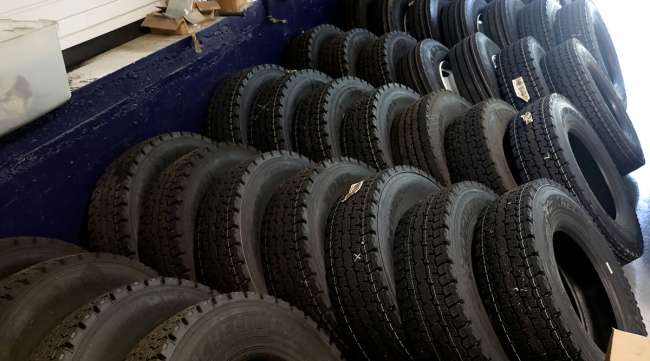Associated Press
EPA Will Review Salmon-Killing Chemical in Vehicle Tires

[Stay on top of transportation news: Get TTNews in your inbox.]
U.S. regulators say they will review the use of a chemical found in almost every tire after a petition from West Coast Native American tribes that want it banned because it kills salmon as they return from the ocean to their natal streams to spawn.
The Yurok tribe in California and the Port Gamble S’Klallam and Puyallup tribes in Washington asked the Environmental Protection Agency to prohibit the rubber preservative 6PPD earlier this year, saying it kills fish — especially coho salmon — when rains wash it from roadways into rivers. Washington, Oregon, Vermont, Rhode Island and Connecticut also wrote the EPA, citing the chemical’s “unreasonable threat” to their waters and fisheries.
The agency’s decision to grant the petition last week is the start of a long regulatory process that could see the chemical banned. Tire manufacturers are already looking for an alternative that still meets federal safety requirements.
“We could not sit idle while 6PPD kills the fish that sustain us,” Joseph L. James, chairperson of the Yurok Tribe, told The Associated Press. “This lethal toxin has no business in any salmon-bearing watershed.”
6PPD has been used as a rubber preservative in tires for 60 years. It is also found in footwear, synthetic turf and playground equipment.
As tires wear, tiny particles of rubber are left behind on roads and parking lots. The chemical breaks down into a byproduct, 6PPD-quinone, that is deadly to salmon, steelhead trout and other aquatic wildlife. Coho appear to be especially sensitive; it can kill them within hours, the tribes argued.
Volvo's Keith Brandis and Eric Bond take an in-depth look at how the company's SuperTruck 2 improves freight efficiency. Tune in above or by going to RoadSigns.ttnews.com.
The salmon are important to the diet and culture of Pacific Northwest and California tribes, which have fought for decades to protect the dwindling fish from climate change, pollution, development and dams that block their way to spawning grounds.
The chemical’s effect on coho was noted in 2020 by scientists in Washington state, who were studying why coho populations that had been restored in the Puget Sound years earlier were struggling.
“This is a significant first step in regulating what has been a devastating chemical in the environment for decades,” said Elizabeth Forsyth, an attorney for Earthjustice, an environmental law firm that represents the tribes.
She called it “one of the biggest environmental issues that the world hasn’t known about.”
The U.S. Tire Manufacturers Association said in a statement that an analysis is underway to identify alternatives to 6PPD that can meet federal safety standards, though none has yet been found.
“Any premature prohibition on the use of 6PPD in tires would be detrimental to public safety and the national economy,” the statement said.
The Puyallup Tribal Council called the EPA’s decision “a victory for salmon and all species and people.”
The agency plans by next fall to begin gathering more information that could inform proposed regulations. It also plans to require manufacturers and importers of 6PPD to report unpublished health and safety studies by the end of next year. There is no time frame for a final decision.
Want more news? Listen to today's daily briefing above or go here for more info
“These salmon and other fish have suffered dramatic decreases in population over the years. Addressing 6PPD-quinone in the environment, and the use of its parent, 6PPD, is one way we can work to reverse this trend,” Michal Freedhoff, an assistant administrator in the EPA’s chemical safety and pollution prevention office, said in a statement.
The chemical’s effect on human health is unknown, the EPA noted.
Susanne Brander, an associate professor and ecotoxicologist at Oregon State University, called the decision a great move, but cautioned that the lethal impacts on salmon are likely from more than just 6PPD. She said she is also concerned about whatever chemical tire manufacturers eventually use to replace it.
“As someone who’s been studying chemicals and micro-plastics for a while now, my concern is we’re really focused on this one chemical but in the end, it’s the mixture,” she said. “It’s many different chemicals that fish are being exposed to simultaneously that are concerning.”





